Tips For Distressing Painted Furniture And Painted Home Decor
Distressing furniture and home decor accessories is quick and easy. You can distress any paint, and there are many different techniques for distressing paint. I’ve learned some tricks when it comes to this popular technique for making furniture and decor look old and worn, and I’m sharing my tips for distressing furniture today!
Tips For Distressing Furniture And Home Decor
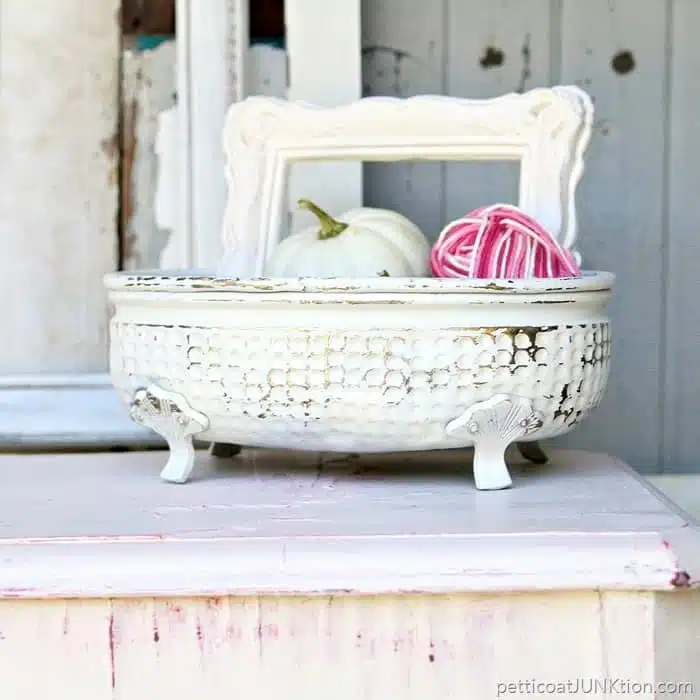
I don’t pretend to know everything about the subject, but I’ve learned a few things after working on hundreds of paint projects. I learned this stuff mostly by making mistakes and by trial and error. Below is a list of things you should know about distressing paint.
1. The Type Of Paint Makes A Difference
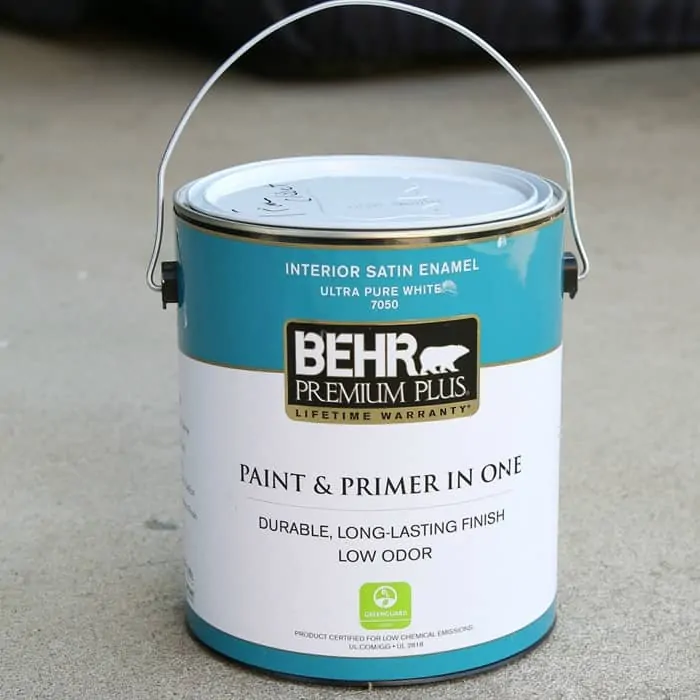
Paint type makes a big difference when it to distressing the paint. Most brands of latex paint sand off easily….even the type with paint and primer in one. Sometimes, latex paint will peel off when you sand the paint. There is a difference in peeled paint and distressed paint. I don’t know for sure, but I think the reason the paint peels is the brand of latex paint or not having enough drying time before sanding. Those are my best guesses.
2. Spray Paint
Spray paint is easy to distress because the paint layer is really thin. I usually go with higher grit sandpaper to distress spray painted items. More info on the grit size of sandpaper is coming up.
FolkArt Home Decor Chalk Finish Paint, Chalk-type paints, Caromal Colours Paint, Beyond Paint, Annie Sloan Chalk Paint, and other specialty furniture paints adhere to furniture really well. These paints also distress really well, but removing the paint takes a little more elbow grease.
3. Furniture Composition Matters
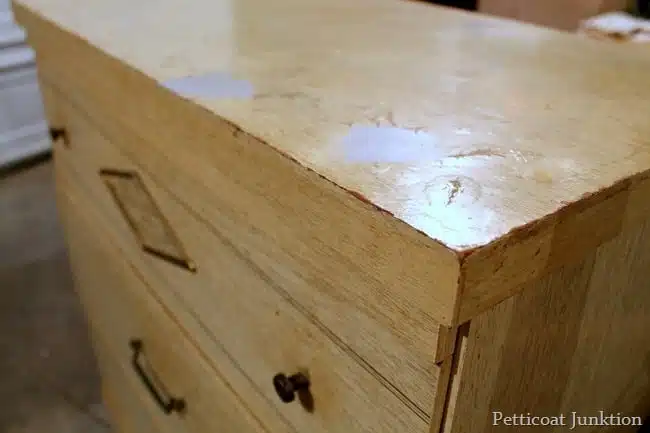
Some types of furniture just can’t be distressed. Furniture made from particle board, MDF, and similar products other than real wood should not be distressed. Once you sand through the paint and the top coat on this type of furniture, it is like paper and turns into bulging, bumpy areas or particles that flake off like sawdust.
If you do have MDF or fake wood furniture, I have a great technique for making the paint look distressed. You can find that post here…How To Give Painted MDF Furniture A Distressed Look.
4. Plastic Furniture
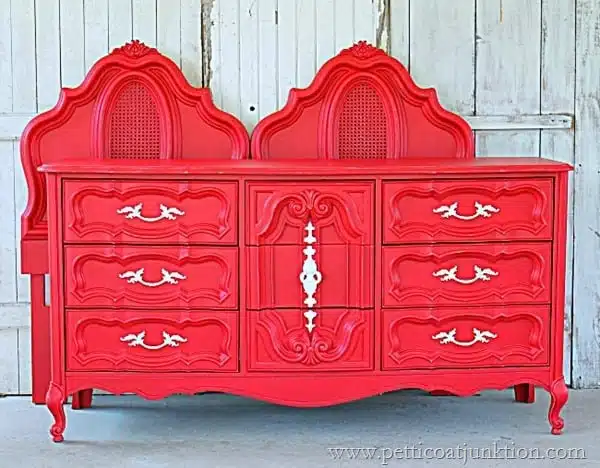
Certain finishes, such as laminated table tops, cannot be distressed. Furniture made in the 80’s and a few other periods have drawer fronts made of plastic. These cannot be distressed, either.
5. Real Wood Furniture
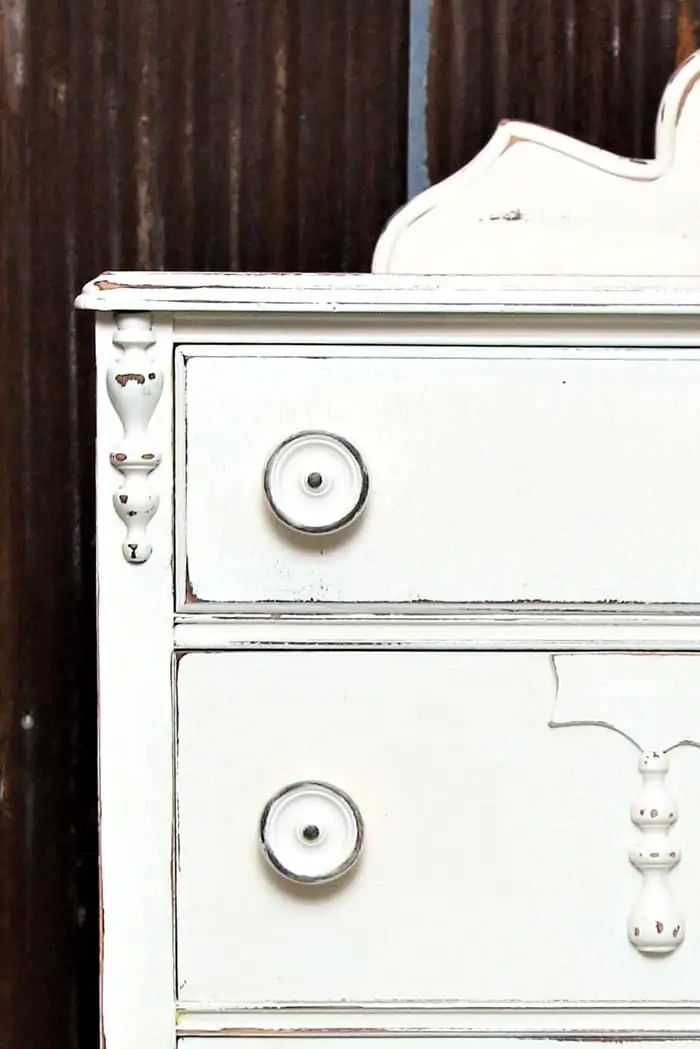
Real wood is the only product that can be distressed properly. Distressing painted wood gives it another dimension and adds character to the furniture piece.
6. Sandpaper Grit Size Is Important
Sandpaper is rated according to grit or coarseness of the particles used to make the paper, and it is available in sizes from P12 to P6000.
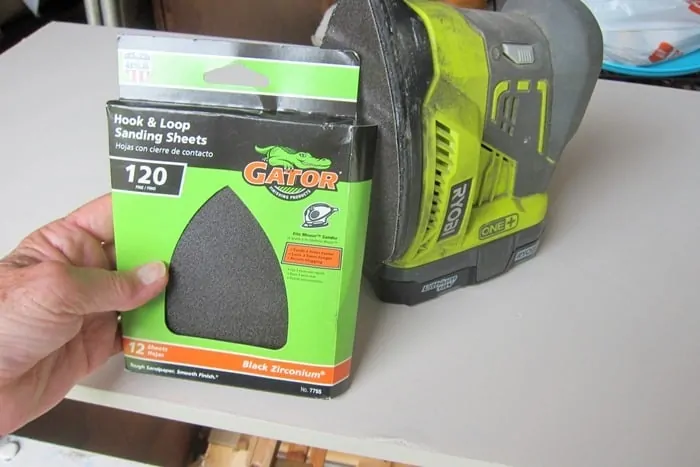
The smaller the number, the coarser the grit. For distressing my DIY projects, I use a grit range between 60 and 220. Sixty grit is very coarse, and I use it to remove well-adhered paint. A good standard for my furniture projects is 100 grit.
7. Flexible Sandpaper
I also love the flexible sandpaper made by 3M, especially when distressing paint by hand. I fold the sandpaper so there are 2 or 3 layers in order to grip it better. You can fold the other sandpaper, but it will come apart when you use it.
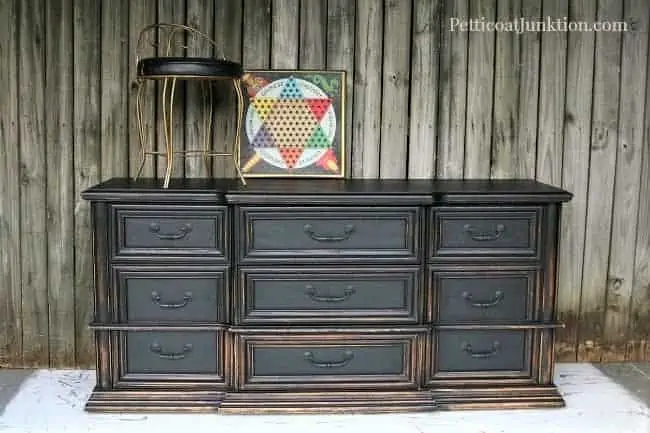
8. Paint Dry Time
Freshly painted projects will usually distress easily. Removing the paint will be much harder if a piece has been painted for months or years. For paint that is hard to remove, I dampen it with a wet rag and sometimes spray the piece with Simple Green.
It all depends on how hard it is to distress the paint. After wiping the paint with a damp rag, let it sit for a few minutes, then distress it with sandpaper.
9. Distress The Details
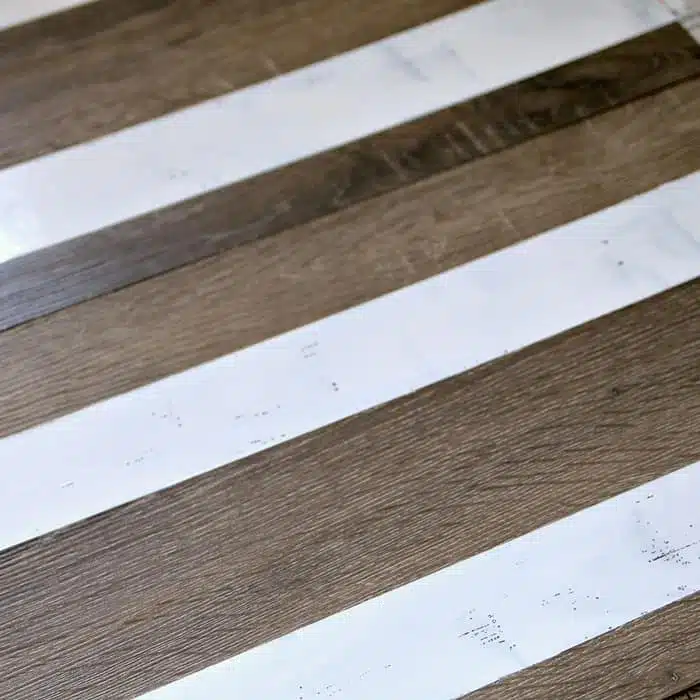
Distressing stripes, stenciled designs, etc. is a great idea. Do not distress the painted furniture until you have finished adding the design details.
10. Electric Sander Or Distress By Hand
Distressing paint with an electric sander or by hand is a matter of preference. You have more control over the distressing when sanding by hand. Sanding by hand is exactly how it sounds. You use a piece of sandpaper or a sanding block, and you distress the paint by hand. If you are working on a large piece, then take your time and take breaks.
11. The Power Sander
The power sander will remove a lot of paint in a very short amount of time. If the power sander is a monster and the speed is really fast, you will get ugly sanding marks. The vibration of the sander can cause ugly squiggly designs.
12. Distressing Mistakes
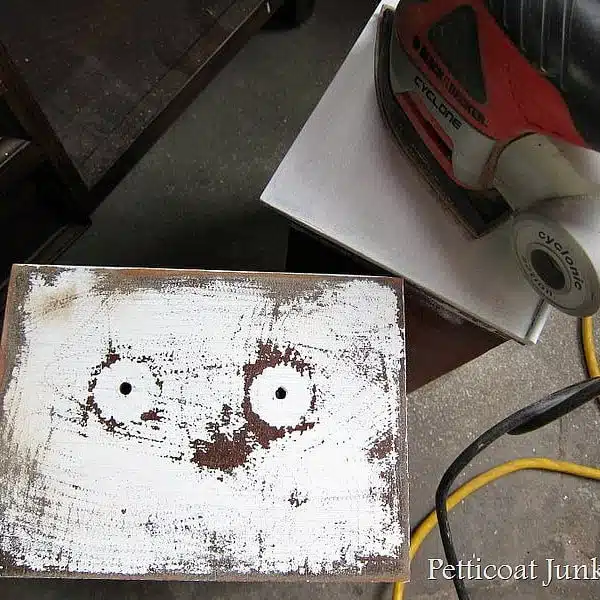
The horrible distress job in the photo above exemplifies how not to distress paint. Yes, this is one of my very first projects. To keep the sander from making crazy patterns in the paint, you need to use firm, smooth movements when sanding. If I’m distressing paint with a sander, it means I have a large piece to distress, and I want to remove a lot of paint. I use the sander for moderate and heavy distressing.
13. Wet Distressing Method
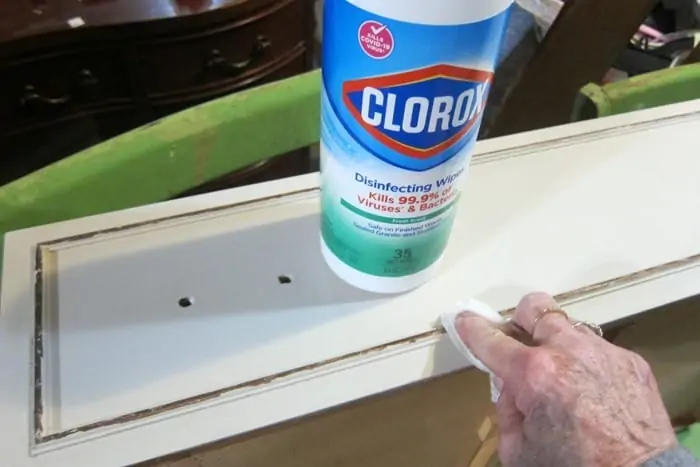
There are several options for distressing paint if you don’t want to use a sander and deal with the mess. You can distress paint using baby wipes, Clorox Wipes, household cleaners, and probably more things I haven’t tried.
The secret to the wet distress method is to distress the paint just after it has dried. If you wait too long, removing the paint takes much more elbow grease. The plus to the wet distress method is there is no mess, no sandy stuff floating around or accumulating on the floor.
14. Save Time- Paint And Distress Multiple Pieces In One Sitting
To save time, gather several small pieces and brush paint or spray paint them the same color. Then, distress the paint when dry. This saves so much time. Work smarter, not harder.
15. Faux Distressing Paint Finish
I talked about wood furniture being the only good candidate for distressing. A faux distressing technique using a layering block is an alternative to real distressing.
The layering block is used to apply a thin line of contrasting paint over the painted piece to give a two-toned finish. To see this technique, click here….Layering Block Distressing Technique. Sometimes, sanding will leave a hazy look on the paint. Applying a layer of thin wax should cover that up. Also, if the wood has a raw look to it, the wax will darken the wood a bit and give it a more natural look. My favorite budget wax is Howard’s.
Distressing Tips
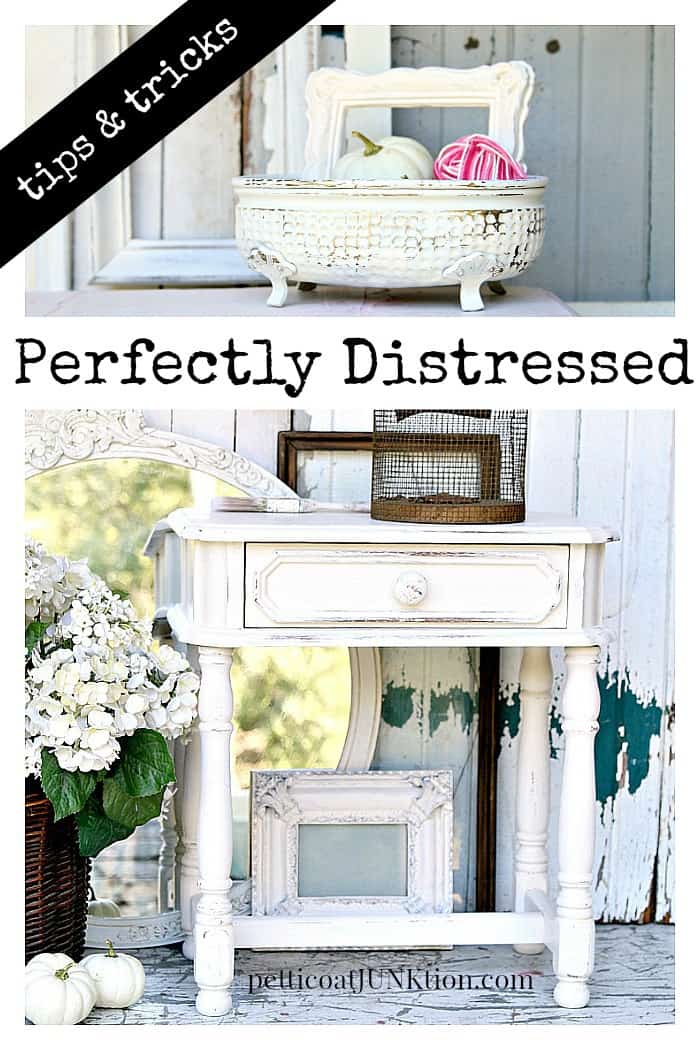
Do you guys have any tips on distressing painted furniture or the products you prefer? Please share! As I mentioned, these are tips I’ve picked up over the years, I still have a lot to learn. There is a list of tools and products I like to use for distressed paint projects at the end of the post.
Questions?
You guys know I call myself the Queen of Distressing. There’s a reason for that. Distressing paint is my favorite furniture makeover technique. You can distress anything that’s been painted, including lamps, photo frames, wall and window trim, furniture, and more. Please email me if you have questions.
I hope you guys have a great day, and thanks for being here. See you tomorrow. Kathy
Author: Kathy Owen
Kathy Owen is the founder of the home decor blog Petticoat Junktion where she shares tutorials on painting furniture and upcycling thrifty finds into unique home décor. Her DIY projects have been featured on the Home Depot Blog, Plaid Crafts, Behr Designer Series, and in numerous magazines. Kathy’s newest website is HappyHomeDIY.com

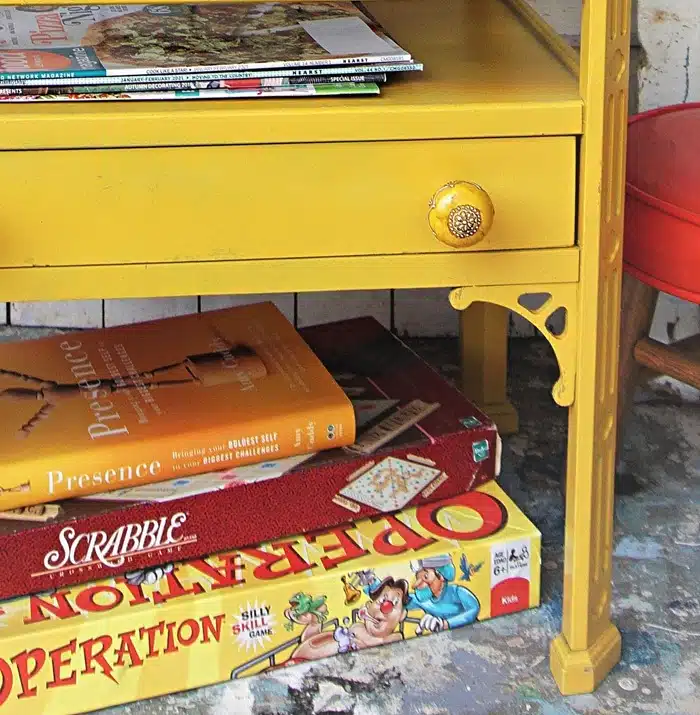
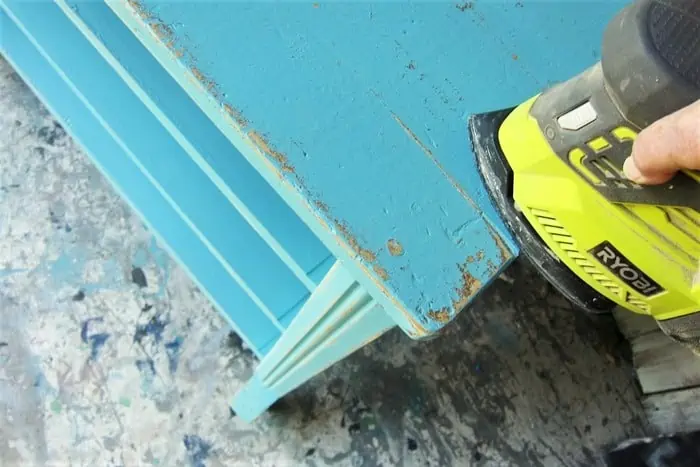
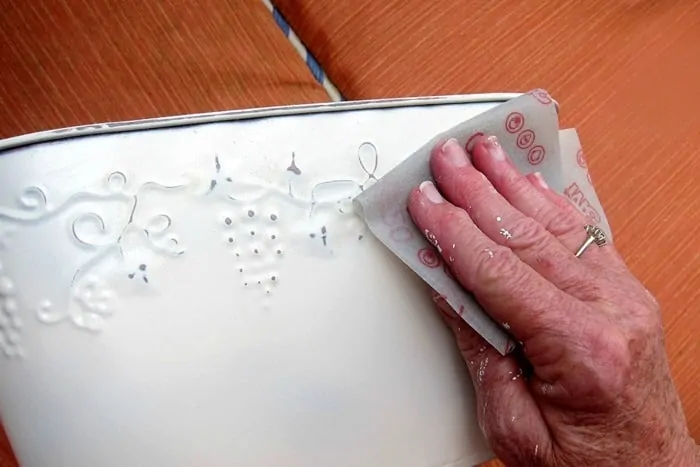
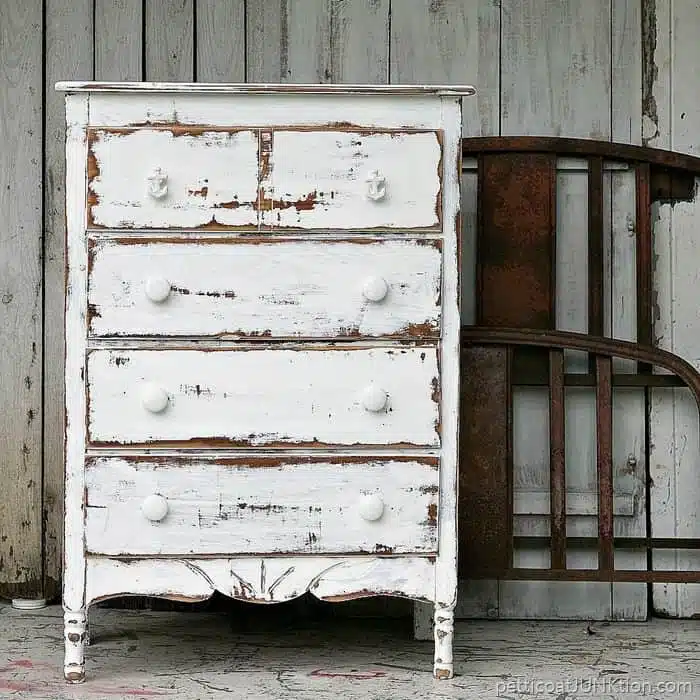
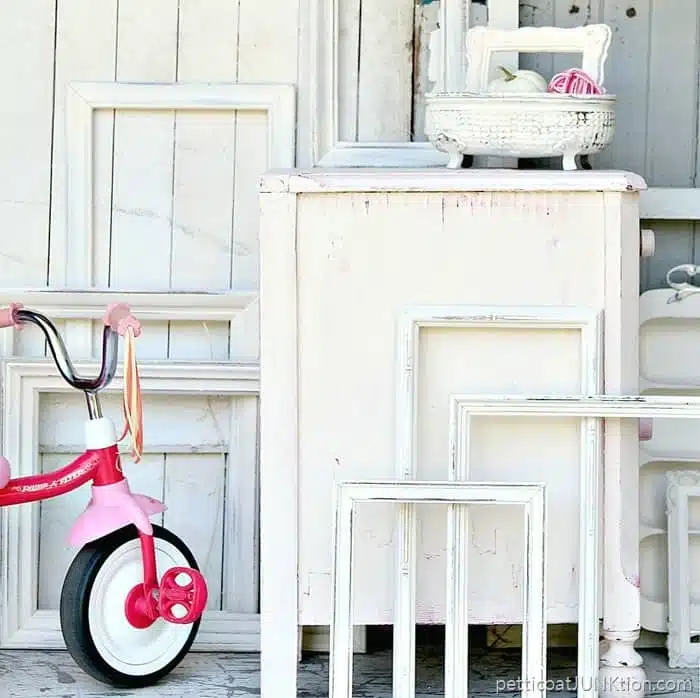
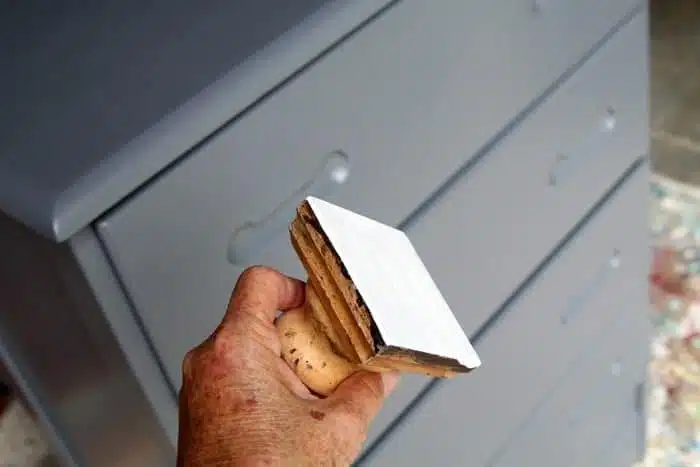
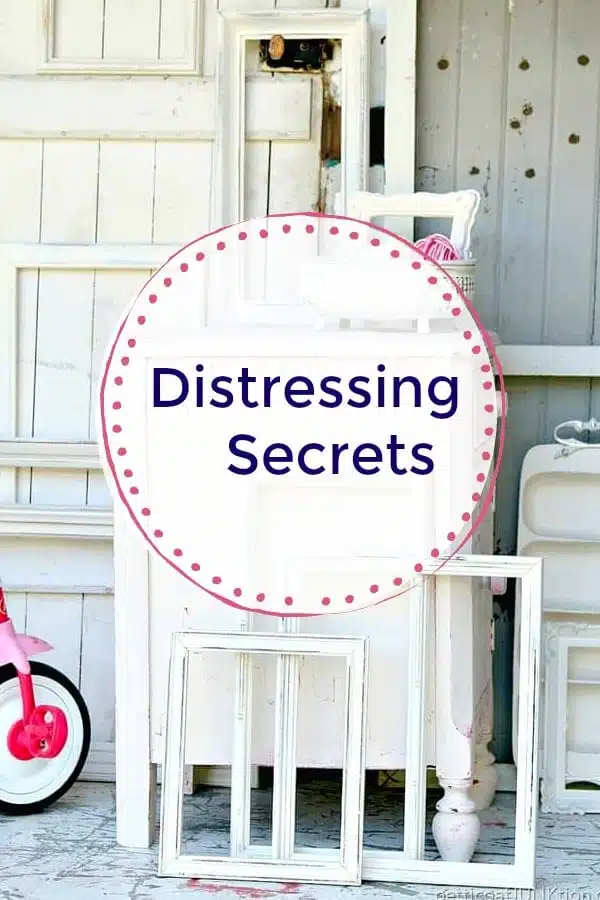

You’re welcome!
Thank you so much Kathy. Great explications. Love from Marseille in 🇫🇷 France
Yvette
Great post, Kathy! Very clear and helpful. Thanks for the info.